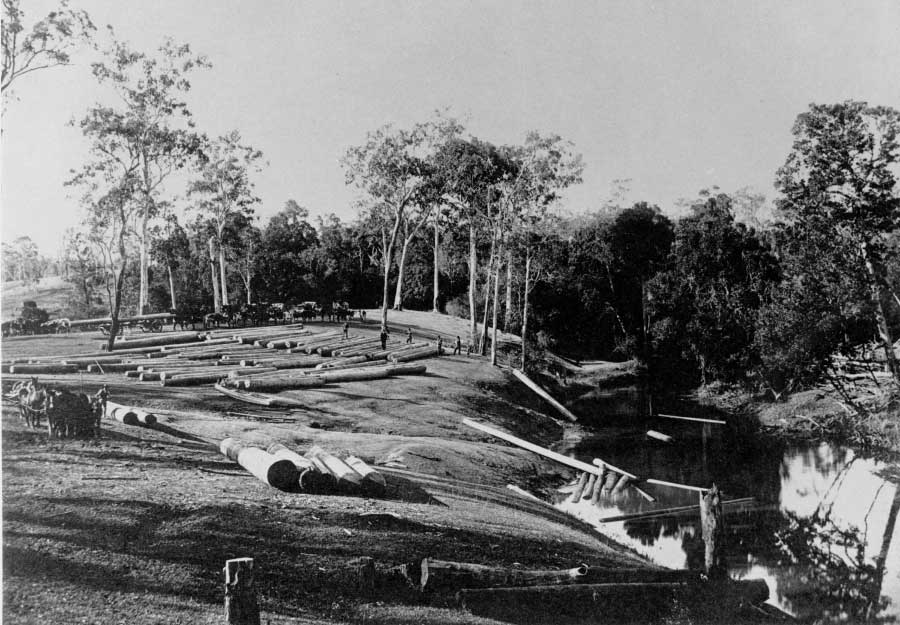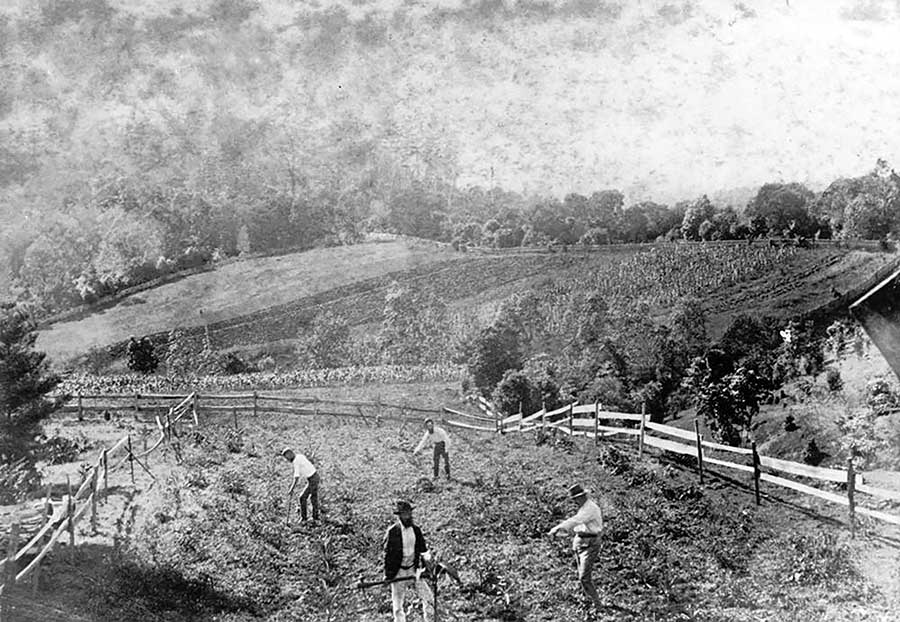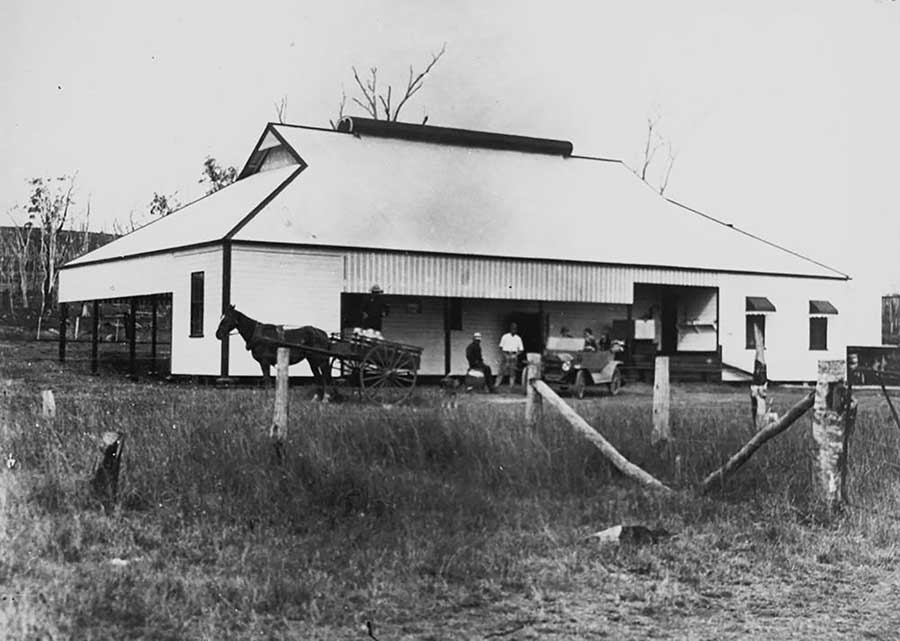A History of Pullenvale
1850 Early loggers sought timber
The name Pullenvale, in use since 1870, is probably from the Pullen Pullen Creek that flows through the valley (vale). The creek name has been in use since before 1850. Or it may have been an Aboriginal expression referring to a fight and/or corroboree. There is also a suggestion the creek was named after an early timber-getter in the area, George Pullen.
Pullenvale was populated by the Turrbal tribe and it is claimed that there were 5 bora rings in the general area.
The early loggers sought timber for construction in the area in the 1850s. The first timbers logged were hoop pine, red cedar and rosewood. As these species diminished they then sought other scrub softwoods and then finally the eucalypts which were logged until World War 11. From 1870 onwards the hardwoods were in demand for railway sleepers, bridge timbers and house frames.
Logs from the area were hauled to Moggill Creek at the rafting grounds, tipped into the creek and tied together in rafts with chains and floated down the Brisbane River to the sawmills in Brisbane. They could only move on the outgoing tide and were moored for the incoming tide. A small sawmill operated for a number of years at Mill Road off Grandview Road.
Most of the Pullenvale land was subdivided and auctioned in the 1860s when early settlers moved in to farm the land. Fodder crops were grown to supplement the feeding of cows during winter. Pineapples were grown extensively right through to the 1990s, when the last pineapple farm in Grandview Rd closed. Most farms had a variety of other crops including corn, arrowroot, potatoes and other vegetables. For some time cotton was grown. Small scale dairying was popular and butter and milk were sold locally and to butter factories.
In the 1940s 51% of the total population were framers, compared to only 3% by the 1980s. The farmers and their children were used to the hilly land and became expert horsemen. Many enlisted the Light Horse Battalion in World War 1 because of their superior horsemanship.
A rudimentary road was built to Moggill in the 1850s. By 1944 all the roads in the district were still unsurfaced and it was not until the 1990s that most roads were sealed.
1874 Pullen Vale State School opened
The Pullen Vale State School, one of the first in the area, opened on 16 March 1874. Although education was made compulsory in 1875, numbers were usually down as children were often required to help on the farm or at home. The 3Rs were taught but being a rural community studies also included aspects of agriculture and biology, even milk and cream testing.
In 1906 the school was relocated to new site and the teacher’s residence was relocated two years later. A new school was opened in 1981 with 80 students. There were 300 by 1998 and now the school has 438 students.
The Pullenvale Hall started as a pineapple packing shed on Jack Woodward’s farm. A progress association was formed to act as trustees for the hall and dances have been held there regularly. It has also been a centre for community associations to hold meetings and other activities.
1982 Pullenvale Environmental Education Centre established
In 1982 the Department of Education established the Pullenvale Environmental Education Centre on a 2 acre bushland block in Grandview Road. Historic buildings on the site include the original school buildings, the original Ballard farmhouse, the old Ogle house, a blacksmith’s shed and a slab hut
The Pullenvale Cemetery is located off Haven Road, on the very steep upper slopes of Mt Elphinstone Range. One pioneer and 7 children of pioneers are buried there.
Logs from the area were hauled to Rafting Ground Reserve on Moggill Creek. Image courtesy SLQ Neg. 34712.
Farm workers at Pullenvale 1889. Image courtesy SLQ Neg. 41551.
This building was a pineapple packing shed and doubled as a hall for a while, 1916. Image courtesy SLQ Neg. 91567.





